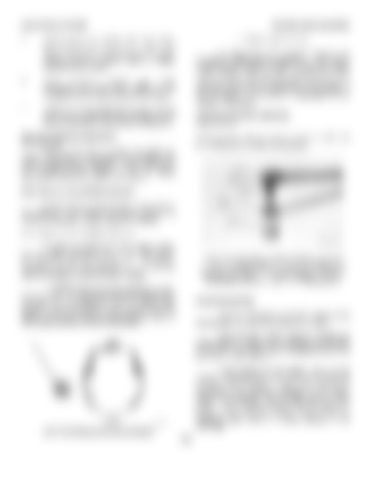ELECTRICAL SYSTEM 2.
TESTING AND ADJUSTING
1. Voltage adjustment cap.
Cables between the battery, starter and engine ground must be the correct size. Wires and cables must be free of corrosion and have cable support clamps to prevent stress on battery connections (terminals).
3.
Leads, junctions, switches and panel instruments that have direct relation to the charging circuit must give correct circuit control.
4.
Inspect the drive components for the charging unit to be sure they are free of grease and oil and have the ability to operate the charging unit.
No adjustment can be made to change the rate of charge on these alternator regulators. If the rate of charge (ampere output) is within 10 amperes of rated output (marked on the alternator frame) the regulator is good. An over or under charged battery condition can be corrected sometimes by an adjustment to the voltage. If rate of charge is not correct, a replacement of the regulator is necessary. Alternator Pulley Nut Tightening (Delco-Remy) Tighten nut that holds the pulley to a torque of 100 ± 10 Nâm (75 Z± 5 lb. ft.) with the tools shown.
Alternator Regulator Adjustment (Delco-Remy) When an alternator is charging the battery too much or not enough, an adjustment can be made to the output voltage of some alternators. Make reference to the SPECIFICATIONS section to find all testing specifications for the alternators and regulators. Delco-Remy 24V 60A (4N3986 Alternator) No adjustment of voltage output can be made on this alternator. If the voltage and ampere output is not correct, the alternator must be repaired or replaced. Delco-Remy 32V 60A (4N3987 Alternator) To make an adjustment to the voltage output, pull out voltage adjustment cap (1). Turn the cap 90° and install it again into the alternator. The voltage adjustment cap has four positions: HI, LO, and two positions between the high and the low setting.
TOOLS TO TIGHTEN ALTERNATOR PULLEY NUT 1. 5P7425 Torque Wrench. 2. 8S1588 Adapter (1/2" female to 3/8" male). 3. FT1697 Socket. 4. 8H8517 Combination Wrench (1 1/8"). 5. FT1696 Wrench.
The 4N3987 Alternator can be adjusted for either 30 or 32 volts. A replacement alternator shipped from the factory will be adjusted for 32V (16 battery cells) systems. Where the alternator is to be used in a 30V (15 battery cells) system, pull out voltage adjustment cap (1) and change from the HI position to position 3.
STARTING SYSTEM Use the multimeter in the DCV range to find starting system components which do not function. Move the start control switch to activate the starter solenoid. Starter solenoid operation can be heard as the pinion of the starter motor is engaged with the ring gear on the engine flywheel. If the solenoid for the starter motor will not operate, it is possible that the current from the battery did not get to the solenoid. Fasten one lead of the multimeter to the connection (terminal) for the battery cable on the solenoid. Put the other lead to a good ground. A zero reading is an indication that there is a broken circuit from the battery. More testing is necessary when there is a voltage reading on the multimeter.
CAP TYPE REGULATOR ADJUSTMENT 152

























































































